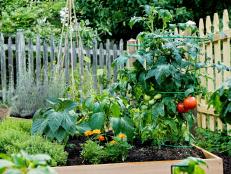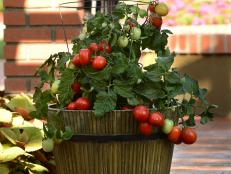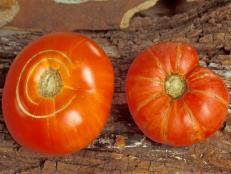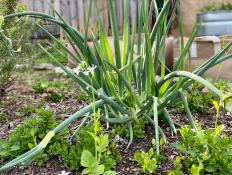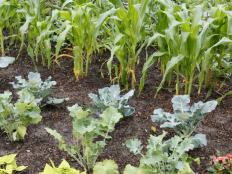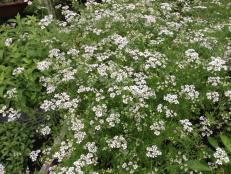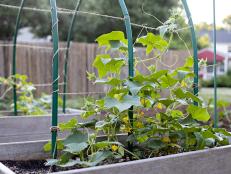Tomato Cages 411
Learn how to select and use the proper cage for your tomatoes and keep your plants producing all summer.


If you are growing tomatoes this year, you’re not alone. Easy to grow in containers or in the garden, tomatoes are the single most popular crop for the home-grower. No matter what type of tomato you’ve chosen to grow, providing tomato plants with structural support as they develop will help keep plants thriving and protect the fruit from disease and pest damage commonly seen when plants are left to sprawl on the ground.
Tomato stakes and trellises are sometimes used, but tomato cages have become an overwhelmingly popular choice for home growers. Be they homemade or storebought, sturdy, open cages give plants room to develop, provide strength and support for branches burdened with fruit, maintain economy of space and keep a fragile harvest healthy and unblemished.
Tomato plants fall into two categories: Determinate and indeterminate. Determinate plants have been bred to grow to a specific height—perhaps three to four feet—and then bloom. Fruit tends to ripen all at once on these “bush” plants, and the compact size makes them popular with gardeners with limited space. Indeterminate plants continue to vine and produce fruit throughout the season, growing anywhere from 5-10 feet tall or higher, depending on the variety.
Selecting the right cage for your tomato plants may not be as simple as it seems. Found in many gardening supply stores, the 3-foot tall, cone-shaped variety may be adequate for some determinate plants, but usually aren’t sturdy enough to handle indeterminate plants—the prodigious growers will soon outgrow the small confines, causing them to topple. Cages should be 14-18 inches in diameter with a height of 4 feet for determinate plants and at least 6 feet for indeterminate.
Sturdy cages may be expensive to purchase, but can be constructed by hand using cost-effective livestock fencing or concrete reinforcement wire. Select galvanized materials to prevent rust and make sure the weave is wide enough to allow access to mature fruit. Use bolt cutters to cut to desired size and height, bend into a cylinder and bend tines into loops to secure. Clip tines at the top of the cage to leave a smooth edge and leave the bottom tines exposed to provide a ground anchor when installing.
Start early. Tomato plants grow fairly quickly and placing cages around mature plants can be difficult to manage without damaging the plant. Once seedlings are established, place cages around the young plants, taking care not to damage developing roots.
To install cages, center the cage around the plant and press down firmly to set the tines into the soil as deeply as possible. For larger cages, stakes may be driven into the ground and tied to the cage to add stability.
As the plant grows to fill the cage, carefully guide the branches though the cage weave as needed to allow the plant to grow without crowding the developing fruit.
Although determinate plants require less structure to develop in a small space, both determinate and indeterminate tomato plants will benefit from the protection and support provided by caging.






